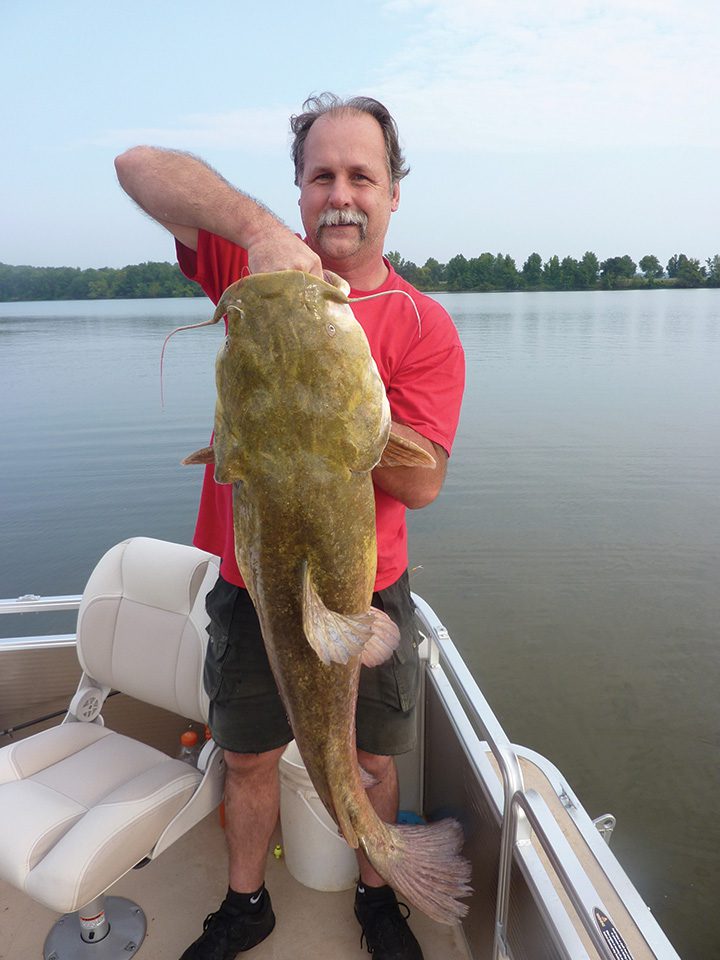
If you like the feel of really big fish on the end of a line, catfish are a good option. There are several different types, but trophy hunters set their sights on blue and flathead catfish. Both species grow large and can weigh in excess of 100 pounds.
For bait, catfish have been caught on just about everything you can think of. But generally, big flatheads are predators and like whole, live, hand-sized bream. Blues like large cut bait like bream, skipjack or carp.
Once you’ve got your bait, here are some ideas for how to fish it.
Fish a Fan: My favorite technique is to anchor up in a good spot near rocky bottom or structure such as a ledge, river channel or creek bed. I have 14 Driftmaster 255 H Pro Duo rod holders, which I use to put out a fan of baits on Penn Fathom reels and medium to heavy rods. These are spooled with 80-pound PowerPro braid. The terminal end is a weight slide on the main line then a swivel and a 3- to 5-foot leader, with a Gamakatsu 8/0 circle hook on the end.
These are the rigs I use to fish Cabela’s King Kat tournaments. They are heavy duty because you never know when a 100-pound monster will show up.
Back-Trolling: On big rivers, back-trolling can be very effective. Use your trolling motor in reverse to slow the boat’s drift in the current and present baits to catfish holding on the bottom.
Bottom bouncing is Bill Dance’s preferred method on the Mississippi River. It’s also very popular on the Tennessee River. It allows you to keep your bait about a foot off the bottom and bounce it to fish facing upstream.
Tie a three-way swivel to a mainline of 40- to 80-lb. braid. On the bottom eye of the swivel, tie in 12 inches of 20-lb. mono drop line and attach a bank sinker. The drop line should be lighter than your main line so you can save the rest of the rig when your sinker gets caught. On the third eye, use a 2- to 3-foot piece of the same line as your main line and attach a 6/0 to 12/0 circle hook, depending on the size of your bait.
Drift Fishing: Drift fishing is very popular on big lakes like Santee Cooper in South Carolina. On windy days, set all your rods on one side of the boat with weights that will slide along the bottom. Pencil, Lindy and slinky sinkers all work well for this. If the wind pushes the boat too fast, deploy driftsocks to slow the boat. If you don’t have driftsocks, 5-gallon buckets work in a pinch.
Gary Turner is a long-time contributor to The Angler and Coastal Angler Magazine. Contact him at gary@purgeright.com.